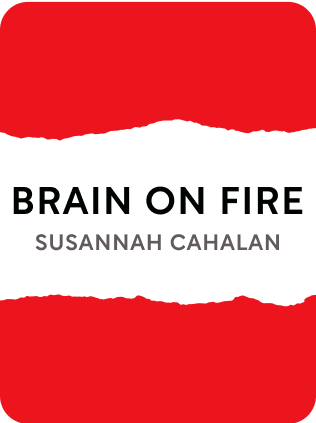

This article is an excerpt from the Shortform summary of "Brain On Fire" by Susannah Cahalan. Shortform has the world's best summaries of books you should be reading.
Like this article? Sign up for a free trial here .
How was Susannah Cahalan misdiagnosed bipolar? What is the impact of a BPD misdiagnosis?
A misdiagnosed bipolar is someone that exhibits the symptoms of manic and depressive episodes. If it is a BPD misdiagnosis, doctors are missing the underlying cause of your symptoms. Susannah Cahalan was one person who was misdiagnosed bipolar.
Read more about how Susannah Cahalan was misdiagnosed bipolar before the doctors found her brain inflammation.
Getting Misdiagnosed Bipolar Was Briefly a Relief
Many of Susannah’s friends and coworkers call to express their concern. Although Susannah would normally accept the calls, the only one she takes now comes from a colleague whose mother is a psychiatrist. Based on Susannah’s symptoms, the psychiatrist has suggested that Susannah has bipolar disorder and is having a manic episode. Once again, Susannah is thrilled to get a diagnosis, however dire it is. Many famous people, like Beethoven, Mark Twain, and Winston Churchill, suffered from bipolar disorder, so Susannah feels like she’s in good company.
The National Institute of Mental Health describes bipolar disorder as a disease that causes unusual shifts in mood; often develops during the late teens or early adulthood; and generates overly joyful and hopeless states—all of which described Susannah. That’s how she was misdiagnosed bipolar.
Dr. Bailey does another basic neurological exam and once again concludes that Susannah is “normal.” He asks Susannah how much she drinks, and she tells him she usually has two glasses of wine a night, adding that she believes she has bipolar disorder. He says it’s a possibility and refers her to a psychiatrist. Before they leave the office, Dr. Bailey tells Susannah’s mom that Susannah is working and partying too hard and not sleeping enough and a misdagnosed bipolar. Like Susannah, her mom is filled with relief. That the diagnosis isn’t serious is exactly what she wants to hear. Only later will Susannah learn that Bailey missed many important details, like where she was when she had her first seizure.
Why Was the Initial Diagnosis a Relief?
People in medical distress are often happier to get a dire diagnosis than to not get one at all. For instance, Susannah is thrilled to hear that her problems stem from a bipolar disorder, a very serious psychiatric condition. She even rationalizes her relief by telling herself that many famous people have also suffered from this disorder instead of thinking about a possible BPD misdiagnosis. Now reflect on your own experiences waiting for answers in difficult situations.
Symptoms Leading to BPD Misdiagnosis
Susannah and her mom visit Sarah Levin, the psychiatrist recommended by Dr. Bailey. Susannah makes the case for her being bipolar. Levin concludes that Susannah is experiencing manic and depressive states, and she prescribes a drug commonly used for mood and thought disorders.
Susannah’s mom has doubts. She calls Susannah’s younger brother, James, and asks him if he thinks Bailey’s diagnoses of alcoholism and Levin’s diagnosis of bipolar disorder are correct. James says no to both. Susannah’s mom agrees with him that she’s a misdiagnosed bipolar and isn’t an alcoholic.
Later that night, Susannah becomes convinced that all her problems are caused by her anti-seizure medication. Her mother begs her to stay on the drug. In one of her last moments as the old, compassionate Susannah who doesn’t want to cause her mother pain, Susannah takes the pill. Later that night, she makes herself throw up to get the drug out of her body.
In the morning, Susannah writes the first document that would later function as a diary of this period—a suggestion made by Allen. Writing things down makes Susannah feel like she’s piecing together what’s wrong with her. “I’m bipolar,” she writes. “That’s why I’m me. I love work. I have to break up with Stephen. I’m jumbly. Work takes too much out of my life.” But she was a misdiagnosed bipolar.
On Susannah’s second day in the hospital, a team of doctors and nurses arrives to conduct another neurological exam. Susannah interrupts the exam to tell one of her neurologists, Dr. Russo, that the people on the TV are saying bad things about her. She throws herself off the bed and pushes her way past the team toward the door. Russo later diagnoses Susannah as manic and psychotic, with two possible diagnoses: bipolar disorder or postictal psychosis, psychotic behavior generated by seizures. But it turns out she was misdiagnosed bipolar.

———End of Preview———
Like what you just read? Read the rest of the world's best summary of Susannah Cahalan's "Brain On Fire" at Shortform .
Here's what you'll find in our full Brain On Fire summary :
- How a high-functioning reporter became virtually disabled within a matter of weeks
- How the author Cahalan recovered through a lengthy process and pieced together what happened to her
- How Cahalan's sickness reveals the many failures of the US healthcare system






